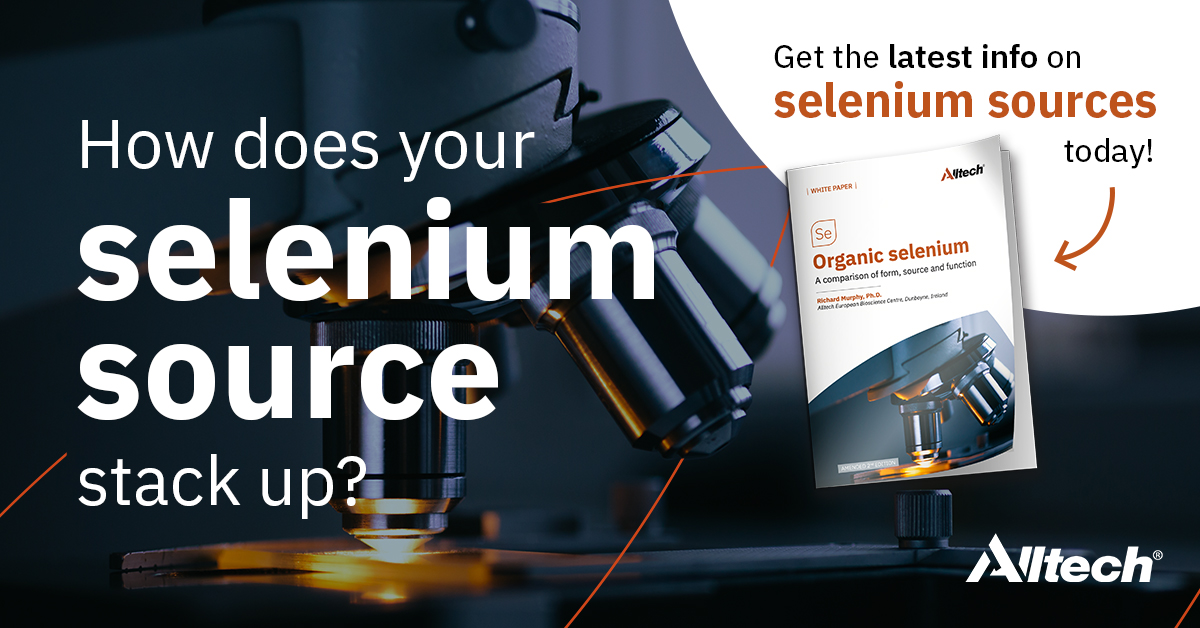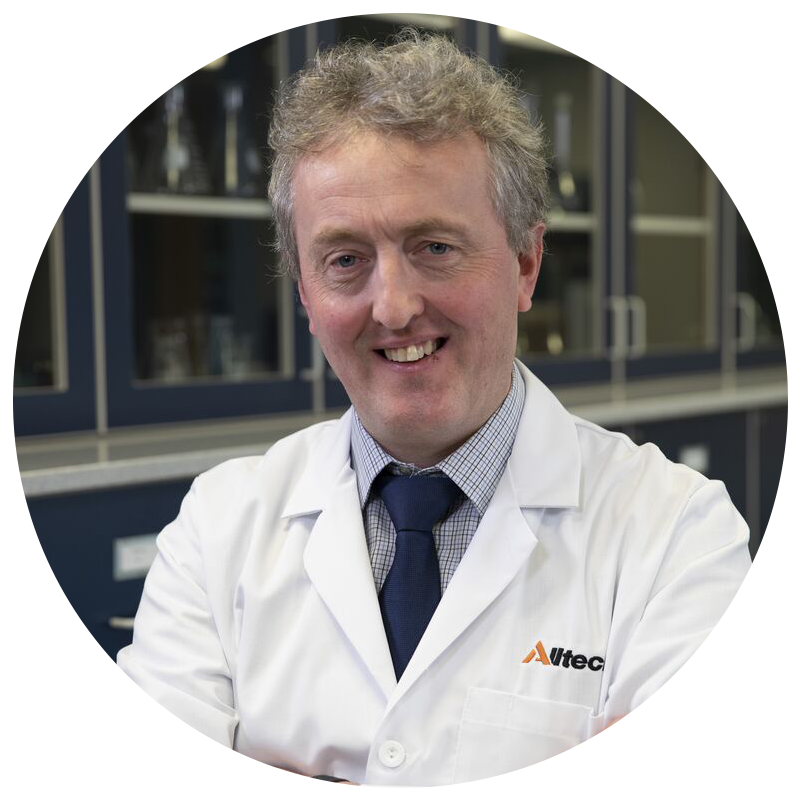

Is selenium source important?
Despite an industry-wide understanding of the importance of selenium in livestock diets, there is still some confusion about the differences between inorganic and organic sources of this trace element. While inorganic sodium selenite has historically been the most common source of selenium added to feed, organic forms of selenium have been found to be more effective, resulting in an increased number of live young per animal, the stimulation of the animal’s immune functions, overall improvements in animal health and an enhanced shelf life for meat, milk and eggs. However, there are multiple types of organic selenium sources available, adding to the complexities for producers as they navigate their purchasing options.
A re-released and amended white paper from Dr. Richard Murphy at Alltech, entitled “Organic selenium: A comparison of form, source and function”, explores this complex issue and aims to elevate our understanding of the differences between selenium sources, allowing producers to make more informed decisions about which selenium source is right for their business.
Have questions? Would you like to speak with one of our team members?
Contact the Alltech® Mineral Management Team at KnowYourMinerals@Alltech.com

Dr. Richard Murphy is the research director at the Alltech European Bioscience Centre in Dunboyne, Ireland. He received a bachelor’s degree in biochemistry in 1994 from University College Galway and earned his doctorate in 1999.
Murphy maintains strong links with numerous universities and research institutions and has been appointed as an adjunct professor on the faculty of science and health studies at Dublin City University and also at the School of Biomolecular and Biomedical Science at University College Dublin.
His current research activities are diverse and include areas such as trace element chelation, organoselenium differentiation, molecular fingerprinting of microbial populations, pathogen control and antimicrobial resistance.
About Alltech
Planet of Plenty ™
Privacy Policy
Contact
Alltech.com